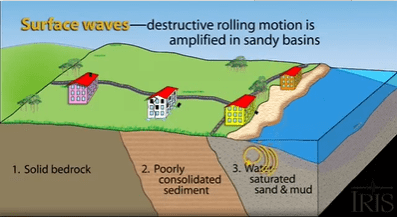Information
When an earthquake occurs, it sends shockwaves throughout the ground in short rapid intervals that extend directions. Buildings are generally built to handle vertical forces from their weight and gravity they cannot handle side to side forces emitted by quakes (secondary wave). This movement vibrates walls, floors, columns and beams hence will cause the entire structure to eventually collapse.
These earthquakes cause fatal damage towards cities and surrounding areas. A prime example is when a 7.8 magnitude struck Nepal in 2014 leaving many injured and killed. Less than 5% of the destroyed properties have been rebuild. This led to shelters over following and not keeping up. This is important as an earthquake proof building can avoid this.
Summary of project
There are many problems when it comes to earthquakes such as identifying hazards and providing education on earthquake safety. But we can do one thing and that is building safer structures that are earthquake resistant. However most buildings are not earthquake resistance which is why we must solve this problem to survive a high magnitude earthquake. When building a earthquake resistant structure such building should be able to survive and simulate 3 types of waves such as the Primary, Secondary and Surface wave.
The Primary wave which is least destructive out of the three forces the ground to move backwards and forwards due to a pulse of energy moving quickly throughout the earth. The Secondary wave allows more slow, swaying and rolling motion that shakes the ground back and forth to the direction of the wave, this is caused by rock particles vibrating at right angle to the direction of the wave traveling. Finally the Surface wave appear to roll along lifting and dropping the ground as they pass causing slow but catastrophic damage to buildings and the environment. This wave is caused due to friction between wind and surface water.



Solution to the Worldwide problem
This is important due to there being large amounts of infrastructure around the world that isn’t earthquake resistance and sadly been impacted heavily by earthquakes. This is devastating for countries as buildings which are poorly designed and constructed for earthquake regions, and population density due to lack of resources and funds. This is why scientist have designed earthquake resistant buildings that are affordable.

Over the past few decades, engineers have introduced new designs and building techniques to better equip buildings to withstand earthquakes.
Shear walls are a useful building technology that can help transfer earthquake forces. Shear walls are often supported by diagonal cross braces made of strong metal which can support the beams as compression and tension can help to counteract pressure and push forces. Shear walls are the best out of the three as push forces coming from a Primary wave which can structure for the Secondary wave if constructed right. Time will tell if it can survive the surface wave due In this way, the building can withstand greater forces of earthquakes and the designer has more freedom in terms of the building. According to this we decided to test this theory on our spaghetti and blue tack structure to see if it really can handle the three waves.
As diaphragms also is the center of the structure this consist of floors, roofs and decks placed over them which diaphragms will help remove tension. Moment resisting frames provide addition flexibility in buildings as they are placing on the joints and allow columns to bend while the joints remain still. This will help it survive larger magnitude earthquakes. Rohan and I decided shears are the most optional due to material restrictions as floor slabs aren’t possible. Also, moment resisting frames will not suit in our project as this requires bending joints which is unlike spaghetti pieces we are provided with.
We believe that our structure will withstand the P wave due to its low strength and low impact, as well as our structure having extensive bracing. We also believe that our structure will be able to survive S wave as the triangular bases add more support and force countering. However, we believe that our structure might not stay standing after being hit with the Surface wave as the floor base is quite small compared to the height of the structure, which could make it unstable and cause it to topple when affected with this wave.

Result and testing
Our hypothesis is yet to be concluded as it didn’t survive the nature of the Primary and Secondary wave switching in between. Hence didn’t get to test the Surface wave. The main problem was cutting the spaghetti pieces not all to the exact same size as if one piece was slightly of it would be tilted on an angle. This impacted our building time drastically.

This task helped me understand process and how much effort goes in designing an earthquake resistance building. This led me to learn the engineering process of Define, Brainstorm, Research, Design, Create, Test and Evaluate. Furthermore, me and my team-mate stayed organized and gave constructive criticism which helped us improve. Overall, it was a fun and enjoyable class.